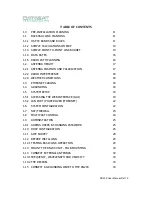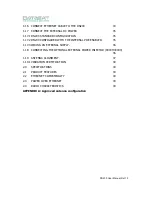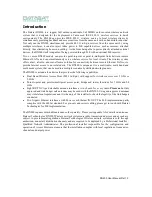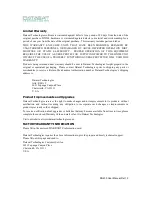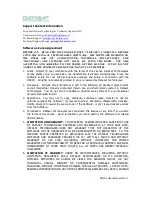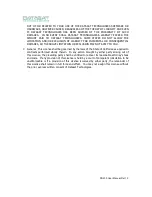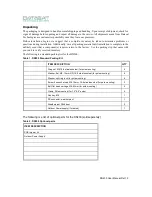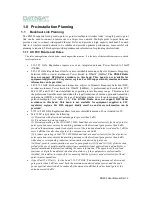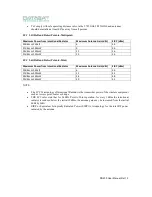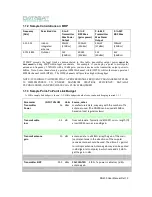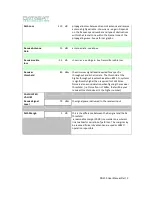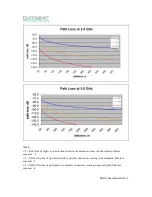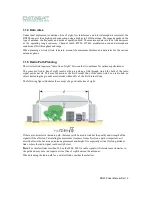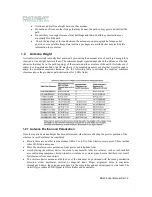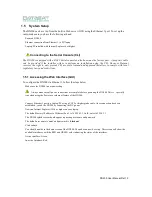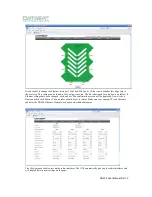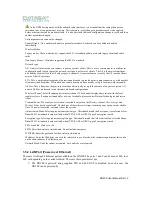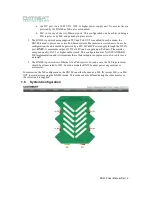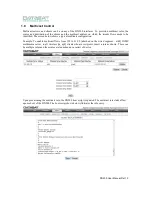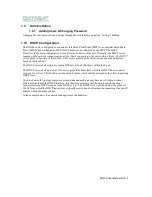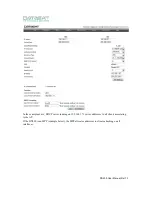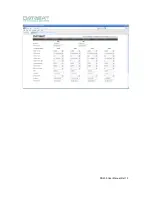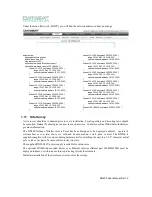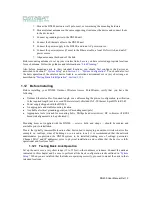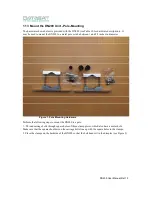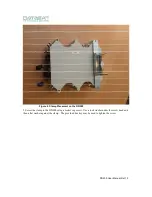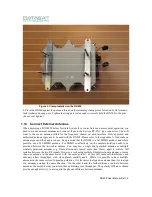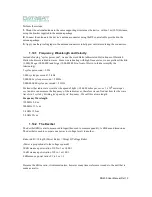
DN200 User Manual Rel 1.0
The wireless device’s antenna sends a radio signal that is polarized in a particular direction. The
antenna’s receive sensitivity is also higher for radio signals that have the same polarization. To maximize
the performance of the wireless link, both antennas must be set to the same polarization direction.
1.2.2 Radio Interference
The avoidance of radio interference is an important part of wireless link planning. Interference is caused
by other radio transmissions using the same or an adjacent channel frequency. You should first scan your
proposed site using a spectrum analyzer to determine if there are any strong radio signals using the
802.11a/b/g/n channel frequencies, and find the noise floor. Always use a channel frequency that is
furthest away from another signal.
If radio interference is still a problem with your wireless link, changing the antenna polarization
direction may improve the situation.
1.2.3 Weather Conditions
When planning wireless links, you must take into account any extreme weather conditions that are
known to affect the location. Consider these factors:
•
Lightning
— The wireless device includes its own built-in lightning protection via chassis
grounding. However, you should make sure that the unit, any supporting structure, and cables are all
properly grounded. Additional protection using lightning rods, lightning arrestors, or surge
suppressors may also be employed.
•
Humidity
— The DN200 is weatherproofed against rain. However, it is recommended to use
weatherproof boots on cables connecting to the DN200 or to apply weatherproof sealing tape around
connectors for extra protection. If moisture enters a connector, it may cause degradation in
performance or even a complete failure of the link.
•
Snow and Ice
— Falling snow, like rain, has no significant effect on the radio signal. However, a
buildup of snow or ice on antennas may cause the link to fail.
1.3
Ethernet Cabling
When a suitable antenna location has been determined, you must plan a cable route from the DN200
wireless device outdoors to the equipment indoors. If a power injector/adapter module is used, it is for
indoor installation only. Consider these points:
•
The Ethernet cable length should never be longer than 90 m (295 ft)
•
Determine a building entry point for the cable
•
Determine if conduits, bracing, or other structures are required for safety or protection of the cable
•
Consider using lightning protection at the power injector end of the cable.
1.4
Grounding
It is important that the wireless device, cables, and any supporting structures are properly grounded. The
wireless device unit includes a grounding screw for attaching a ground wire. Be sure that grounding is
available and that it meets local and national electrical codes.

